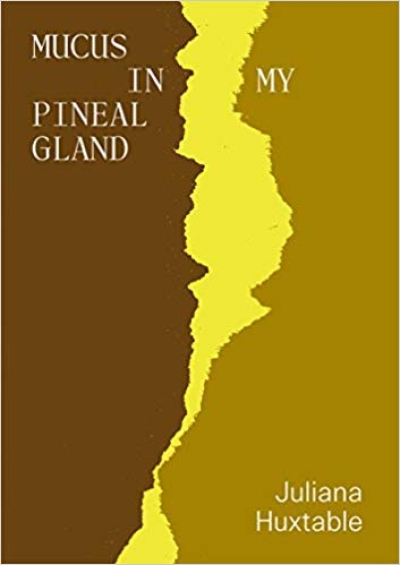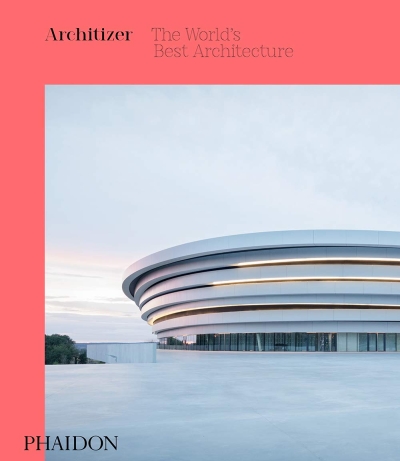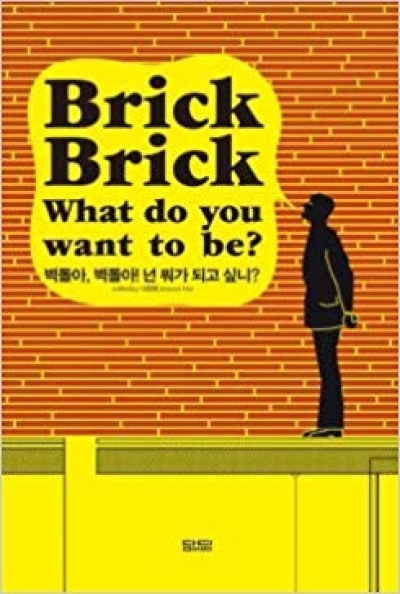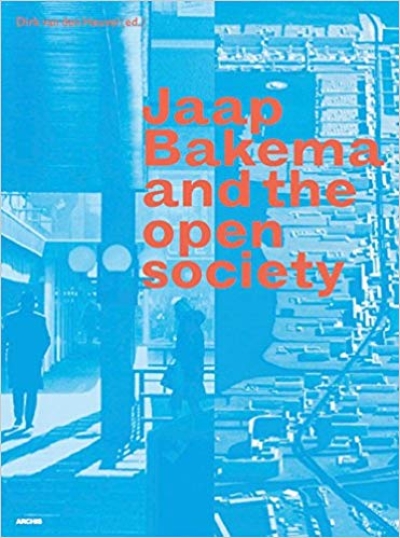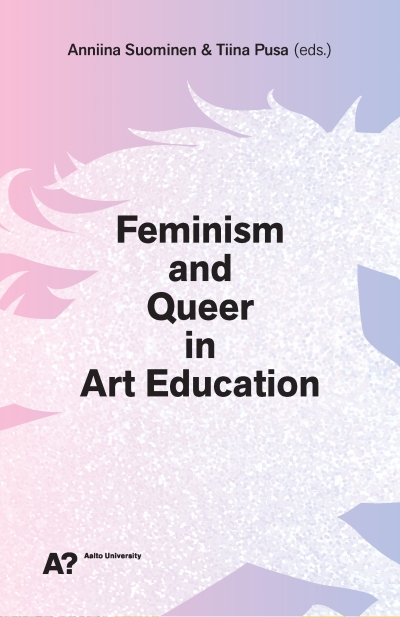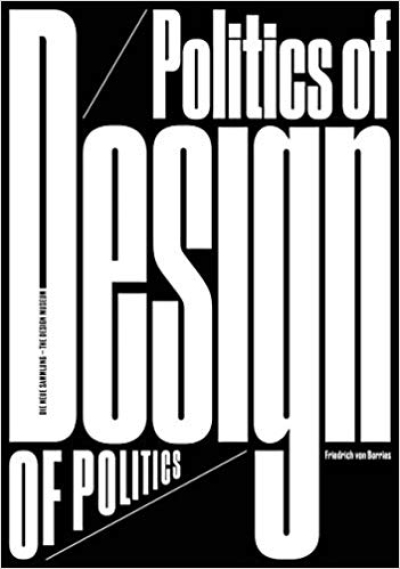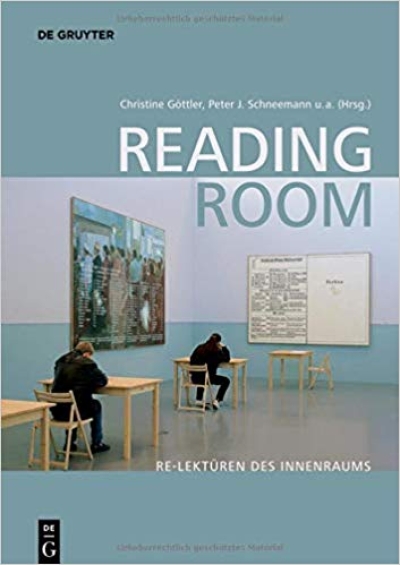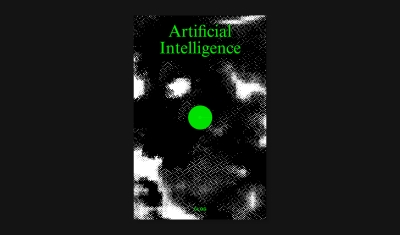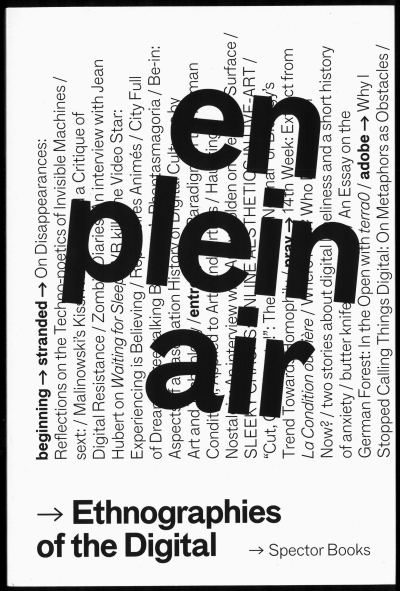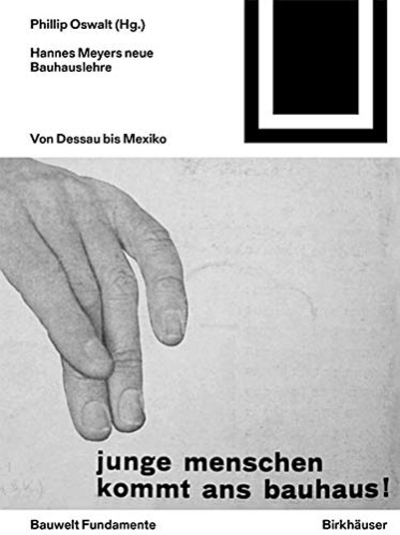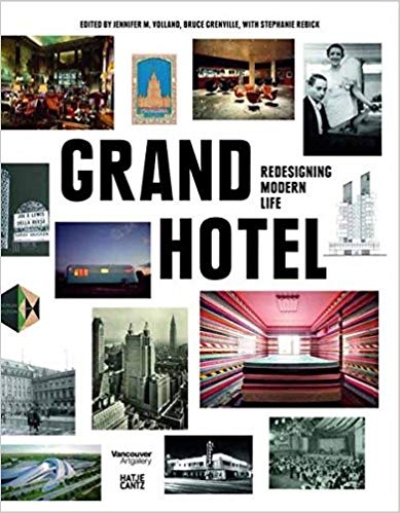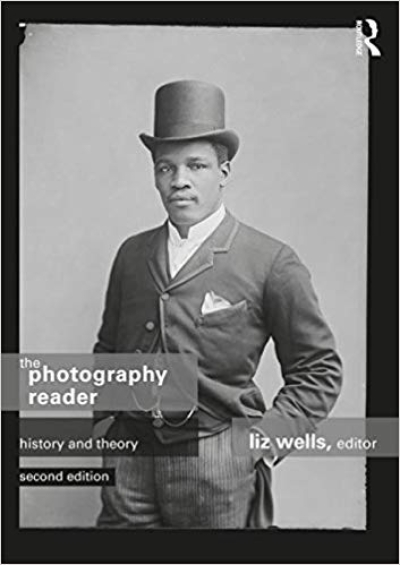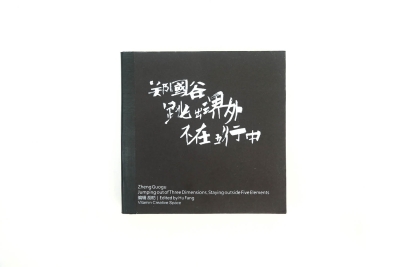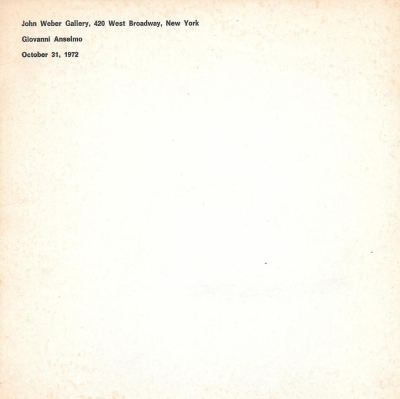gerade nicht auf Lager
Juliana Huxtable
Mucus in My Pineal Gland
Architizer (Ed.)
Architizer: The World's Best Architecture
gerade nicht auf Lager
Jinyoun Na (Ed.)
Brick, Brick What Do You Want To Be?
gerade nicht auf Lager
Dirk Van Den Heuvel (Ed.)
Jaap Bakema And The Open Society
gerade nicht auf Lager
A. Suominen, T. Pusa (Hg)
Feminism and Queer in Art Education
gerade nicht auf Lager
Ekim Tan
Play the City: Games Informing the Urban Development
gerade nicht auf Lager
Cours de Poetique
The Listening Reader
gerade nicht auf Lager
Annette Menting, Walter Prigge (Hg)
Modernes Sachsen. Gestaltung in der experimentellen…
Friedrich von Borries
Politics of Design. Design of Politics
gerade nicht auf Lager
Christine Göttler, Peter J. Schneemann…
Reading Room. Re-Lektüren des Innenraums
gerade nicht auf Lager
T'ai Smith, Ruby Hoette
Modus: A Platform for Expanded Fashion Practice
gerade nicht auf Lager
CLOG 22
Artificial Intelligence
gerade nicht auf Lager
Sibilla Calzolari
Wait - Smoke - Sleep
gerade nicht auf Lager
Karambeigi, Ostertag, Rossol, Schwarzer…
En Plein Air: Enthnographies of the Digital
gerade nicht auf Lager
Philipp Oswalt (Hg)
Hannes Meyers neue Bauhauslehre. Von Dessau bis Mexiko. (…
Matt Keegan (Ed.)
North Drive Press. NDP Nr. 2
Schultz, Wiedemann-Tokarz, Herrmann (Hg…
Farbe räumlich denken: Positionen, Projekte, Potenziale
gerade nicht auf Lager
Volland, Rebick, Grenville (eds.)
Grand Hotel. Redesigning Modern Life
gerade nicht auf Lager
Liz Wells (Ed.)
The Photography Reader: History and Theory (2nd Ed.)
gerade nicht auf Lager
Zheng Guogu
Jumping out of Three Dimensions, Staying outside Five…
John Weber Gallery
Giovanni Anselmo
gerade nicht auf Lager
Hubert Fichte
The Black City. Glosses
Eija-Liisa Ahtila
Anne, Aki i Déu
Kim Trogal, Irene Baumann, Ranald…
Architecture & Resilience. Interdisciplinary Dialogues
Kader Attia
Architektur der Erinnerung / Architecture of Memory
Henrik Plenge Jakobsen
Organisation Faust (LP)
gerade nicht auf Lager
Gem Barton
Don't Get Job ... Make a Job: How to make it as a…
Marc Angélil, Cary Siress
Mirroring Effects. Tales of Territory
gerade nicht auf Lager
Hito Steyerl
Duty Free Art: Kunst in Zeiten des globalen Bürgerkriegs
Mathias Burke, Eleonore Harmel, Leon…
Ländliche Verheissung. Arbeits- und Lebensprojekte rund um…
gerade nicht auf Lager
Julian Raxworthy
Overgrown: practices between landscape architecture and…
gerade nicht auf Lager
Irenee Scalbert
A Real Living Contact with the Thing Themselves
Jesko Fezer, Martin Schmitz
Lucius Burckhardt: Wer plant die Planung? Architektur,…
Ines Kleesattel, Pablo Müller (Hg.)
The Future Is Unwritten: Position und Politik…
Thorsten Bürklin
Palladio, der Bildermacher
Christine Shaw & Etienne Turpin (…
The Work of Wind: Land
Anina Falasca, Annette Maechtel, Heimo…
Wiedersehen in TUNIX!
gerade nicht auf Lager
Helmut Höge
Pollerforschung
gerade nicht auf Lager
Ryuji Fujimura
The Form Of Knowledge, The Prototype Of Architectural…
gerade nicht auf Lager
Metahaven
PSYOP. An Anthology
Boris Buden, Lina Dokuzovic (Eds.)
They'll Never Walk Alone. The Life and Afterlife of…
gerade nicht auf Lager
G. Basilico, A. Video
Incompiuto. The Birth of a Style / La Nascita di uno Style
Niels Lehmann, Christoph Rauhaut (Hg)
Fragments of Metropolis - East | Osten. Poland, Slovakia,…
Sandra Hofmeister (Hg)
Wohnungsbau. Kostengünstige Modelle für die Zukunft
Hintergrund 56
Your Guide to Downtown Denise Scott Brown
gerade nicht auf Lager
Martin Kippenberger
Window Shopping
gerade nicht auf Lager
Nynke Tromp, Paul Hekkert
Designing for Society. Products and Services for a Better…
Zvi Efrat
The Object of Zionism. The Architecture of Israel
gerade nicht auf Lager
Margaret van Eyck
Renaming an Institution, a Case Study (Volume One: Research…
Simon Phipps
Concrete Poetry. Post-War Modernist Public Art
Lea Ouardi
Everyday Urban Design 3. Zwölf Apfelbäume. Selbstbau in der…
Gago, Aguilar, Draper, Diaz (Hg.)
8M - Der große feministische Streik: Konstellationen des 8…
gerade nicht auf Lager
Alla Carta 9
The Palermo Issue
Khurana, Quadflieg, Raimondi,…
Negativität: Kunst, Recht, Politik
gerade nicht auf Lager
Anne-Marie Willis (Hg.)
The Design Philosophy Reader
gerade nicht auf Lager
Paul Stella
Red. Architecture in Monochrome
gerade nicht auf Lager
Koch, Tribble, Siegmand, Rost, Werner (…
New Urban Professions: A Journey through Practice and Theory
gerade nicht auf Lager
Martin Kohout
Night Shifter
gerade nicht auf Lager
B. Brown, N. Atkinson, J. Solomon
Dimensions of Citizenship
Ina Wudtke
The Fine Art of Living
Gianni Pettena
The Curious Mr. Pettena: Rambling around the USA 1971-73
gerade nicht auf Lager
Johannes Binotto
Film / Architektur. Perspektiven des Kinos auf den Raum
gerade nicht auf Lager
Kurt W. Forster
Aby Warburgs Kulturwissenschaft: Ein Blick in die Abgründe…
gerade nicht auf Lager
Gianni Pettena
Non-Conscious Architecture
Barbara Preisig
Mobil, autonom, vernetzt. Kritik und ökonomische Innovation…
gerade nicht auf Lager
Avanessian, Bauwens, De Raeve, Haddad,…
Perhaps It Is High Time for a Xeno-architecture to Match
Lucie Kolb
Study, Not Critique
Jordan Kauffman
Drawing on Architecture: The Object of Lines, 1970-1990
gerade nicht auf Lager
Brian Massumi
99 Theses on the Revaluation of Value: A Postcapitalist…
gerade nicht auf Lager
Stefan Sagmeister, Jesica Walsh
Sagmeister & Walsh: Beauty. Schönheit = Wahrheit /…
Cathleen Chaffee (Hg.)
Introducing Tony Conrad: A Retrospective
Bruno Carvalho, Mariana Cavalcanti and…
Occupy All Streets: Olympic Urbanism and Contested Futures…
gerade nicht auf Lager
Tom Angotti, Sylvia Morse
Zoned Out! Race, Displacement, and City Planning in New…
gerade nicht auf Lager
Terreform (Hg.)
Letters to the Leaders of China: Kongjian Yu and the Future…
gerade nicht auf Lager
Deen Sharp, Claire Panetta (Eds.)
Beyond the Square: Urbanism and the Arab Uprisings
Jennifer Corby
Adventures in Modernism: Thinking with Marshall Berman
Flypaper #4:
Nicole Eisenman: Conscious Razing
gerade nicht auf Lager
Lynette A. Jones
Haptics (Mit Press Essential Knowledge)
gerade nicht auf Lager
A. Janevski, R. Marcoci, K. Nouril (Hg)
Art and Theory of Post-1989 Central and Eastern Europe: A…
M. Kries, A. Klein, A. Clarke (Hg)
Victor Papanek. The Politics of Design
gerade nicht auf Lager
Merve Emre (Ed.)
Once and Future Feminist
Andreas Brandolini
Gestaltung
gerade nicht auf Lager
Jacek Slaski
Gespräche mit Genialen Dilletanten
gerade nicht auf Lager
M. Bruet, E. King, S. Shabahzi, F. Sigg
Color Library. Research into Color Reproduction and Printing
Monika Grubbauer, Kate Shaw (Eds.)
Across Theory and Practice: Thinking Through Urban Research
gerade nicht auf Lager
Ursula Block, Michael Glasmeier
Broken Music: Artists' Recordworks
A. Mircev (Ed.)
O Plesu I Iz(a) Plesa
gerade nicht auf Lager
2G n. 77
Arrhov Frick
gerade nicht auf Lager
B. Groys, A. Vidokle (Hg.)
Kosmismus
gerade nicht auf Lager
Museum für Gestaltung Zürich (Hg.)
Social Design. Partizipation und Empowerment
gerade nicht auf Lager
Lydia Kallipoliti
The Architecture of Closed Worlds, or, What is the Power of…
gerade nicht auf Lager
B. Wittner, S. Thoma, T. Hartmann (Hg.)
Bi-Scriptual: Typography and Graphic Design with Multiple…
gerade nicht auf Lager
John Byrne
The Constituent Museum: Constellations of Knowledge,…
gerade nicht auf Lager
Chimurenga, Edjabe, Pieterse (Hg)
African Cities Reader (III)
gerade nicht auf Lager
Lisa Vollmer
Strategien gegen Gentrifizierung
gerade nicht auf Lager
Kollektiv Orangotango+
This Is Not an Atlas: A Global Collection of Counter-…
Martina Löw
Vom Raum aus die Stadt denken: Grundlagen einer…
Bettina Allamoda (Hg.)
Model Map - zur Kartographie einer Architektur am Beispiel…

